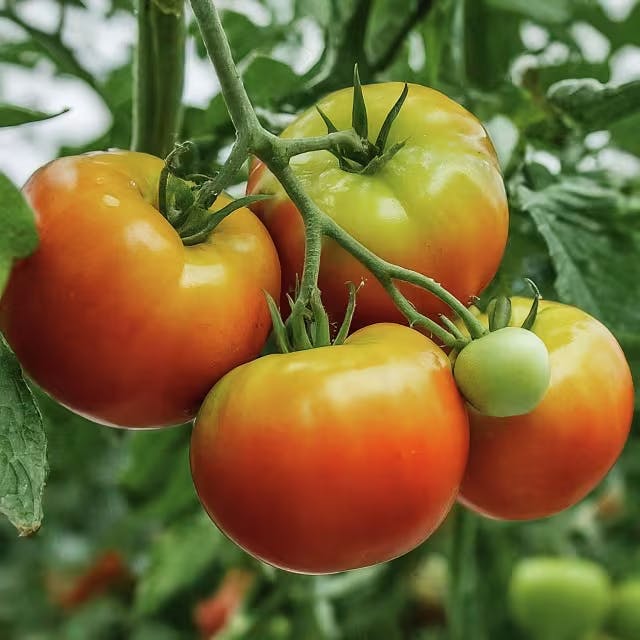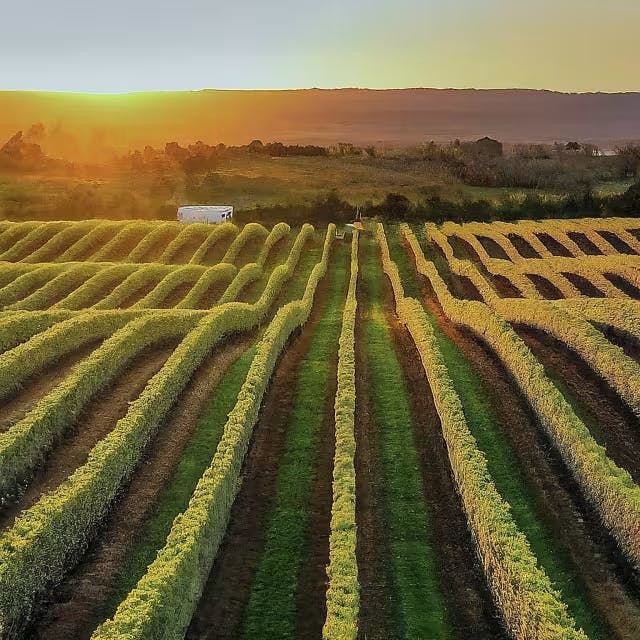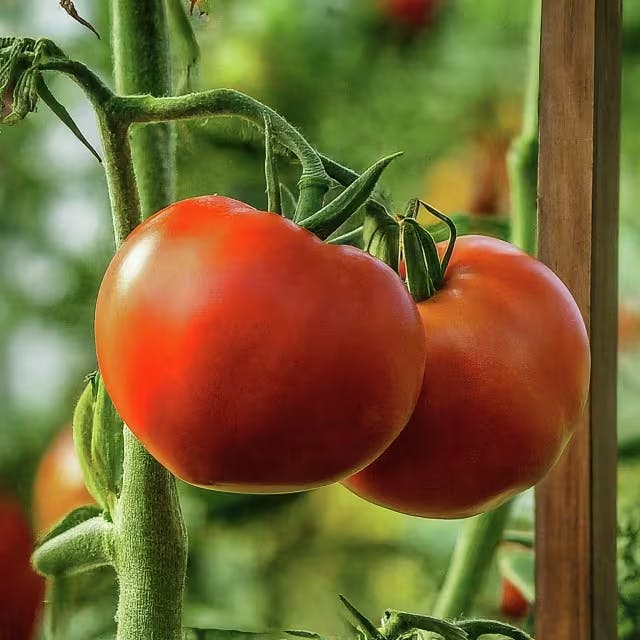The Florida Weave: An Efficient Trellising Method for Tomatoes
Go4Turf
February 26, 2024

Discover the charm and efficiency of the Florida Weave, a trellising technique designed to elevate your tomato gardening game. By skillfully looping twine between strategically placed stakes, this method offers a robust solution for keeping your tomato plants healthy, upright, and safe from ground-level threats. Ideal for gardeners looking to maximize their yield while minimizing effort, the Florida Weave promises not only to enhance the productivity of determinate tomato varieties but also to gift you with extra leisure time—think cocktail hours and hammock swings amidst a thriving garden.
Key Takeaways
The Florida Weave trellising technique boosts tomato plant health and productivity by keeping them upright and off the ground, reducing the risk of disease and pests.
It is particularly beneficial for determinate tomato varieties, maximizing yield with minimal gardener intervention.
Implementing the Florida Weave involves weaving twine between stakes placed alongside tomato plants, creating a stable support structure.
This method saves time and effort in the garden, allowing for a more relaxed and enjoyable gardening experience.
To achieve the best results with the Florida Weave, avoid common mistakes such as improper stake placement and incorrect twine tension.
The Florida Weave not only improves the health and yield of tomato plants but also contributes to a tidier and more visually appealing garden space.

Understanding the Basics of Florida Weave Trellising
For anyone diving into tomato gardening, knowing how to support your plants effectively is key to a bountiful harvest, and this is where the Florida Weave comes into play. This trellising method cleverly keeps tomato plants upright and off the ground, substantially reducing the risk of diseases and pest infestations. The setup requires stakes at each row's end and between plants, with jute or sisal twine looped around in a weaving pattern to cradle the plants as they grow. It’s not only time-saving but also promotes better air circulation and sun exposure for the tomatoes. Choosing determinate varieties, known for their bushier growth habit, complements this method perfectly. The joy of gardening resonates with the idea of converting saved time into moments of relaxation, picture enjoying a serene cocktail hour or unwinding in a hammock, courtesy of the Florida Weave's efficiency. For a deeper dive into supporting your garden’s growth, consider exploring DIY seed starting and potting mix tips. For more insights into the Florida Weave and its practical application, discover here.

Key Advantages of the Florida Weave for Tomato Plants
The Florida Weave offers numerous benefits for tomato growers, blending simplicity and efficiency. This trellising method allows for easier access to plants, making both pruning and harvesting less of a hassle. By promoting vertical growth, it also enhances air circulation and light exposure among the plants. This is crucial in reducing the risk of fungal diseases, a common concern with tomato cultivation. Moreover, the method is cost-effective, requiring minimal investment in stakes and string. It's particularly advantageous for those with multiple tomato plants, as it enables them to trellis rows of tomatoes without individual supports for each plant. With the Florida Weave, gardeners can enjoy a bountiful tomato harvest with reduced labor and material costs. For those eager to see their gardening efforts flourish from the initial joy of receiving seed packages to the celebration of the first harvest, this method stands out as an efficient solution. For detailed guides on trellis techniques, consider exploring this resource and this one for more insights into successful tomato trellising strategies.

Step-by-Step Guide to Implementing Florida Weave in Your Garden
Implementing the Florida Weave in your garden is a game-changer for tomato enthusiasts. This method not only conservatively manages space but also significantly improves air circulation around plants, reducing the risk of diseases. Here's how you can execute this efficient trellising technique:
Begin with sturdy stakes: Place them between every two to three plants along your tomato row. Opt for materials that can weather the elements, ensuring your structure stands strong throughout the growing season. For details on suitable materials, consider insights from UGA Extension on staking and pruning tomatoes.
Weave with care: Starting close to the base of your plants, use a strong, weather-resistant string to weave in and out between the tomatoes and stakes. After looping around the end stake, return on the opposite side of the plants, creating a secure matrix.
Consistent tension is key: Maintain even tension in your string while weaving. This ensures your plants are gently guided upwards, minimizing stress on their stems.
Build upward: As your tomato plants grow, add additional layers of string every 6 to 10 inches in height. This supports development and keeps your tomatoes off the ground, safeguarding against pests and rot.
Prune for prosperity: While the Florida Weave supports the natural growth of the plant, light pruning can enhance air circulation and sunlight exposure, further promoting healthy development. If you're starting your plants from seeds, consulting a beginner’s guide, like Indoor Seed Starting Made Simple, can optimize your initial stages.
Remember, the success of the Florida Weave hinges on regular attention; monitoring and adjusting the string’s tension and adding layers as needed will keep your tomatoes thriving. By following these steps and ensuring you use suitable materials, as recommended by experts like those at UGA Extension, you’re setting the stage for a bountiful tomato harvest.
Common Mistakes to Avoid with Florida Weave Trellising
When implementing the Florida Weave for tomatoes, some common errors can hinder plant growth and yield. Awareness and avoidance of these pitfalls enhance your garden's productivity.
Not Securing Stakes Firmly: Stakes should be deeply rooted in the ground to withstand wind and the weight of growing tomatoes. Loose stakes can lean or fall, damaging your plants.
Using Incorrect Twine: Opt for durable, weather-resistant twine. Thin or low-quality twine may break under the weight of your tomatoes, leading to unsupported and potentially damaged plants.
Skipping Regular Maintenance: The Florida Weave requires ongoing attention. As tomatoes grow, it’s vital to add more twine rows to keep plants supported. Neglecting this step can cause plants to outgrow their support and become vulnerable.
Tightly Wound Twine: While it's crucial to provide support, overly tight twine can cut into the tomato stems, restricting growth or causing injury. Maintain a balance; secure but not constricting.
For more on supporting your tomato plants for optimal growth, consider exploring other trellising methods and care tips. Learning how to repot tomato seedlings for stronger growth or discovering the trough transplanting method could offer additional insights into nurturing your tomatoes.
Remember, the success of the Florida Weave, or any trellising method, relies not just on setup but ongoing care and adjustment. Tailoring your approach to the needs of your plants ensures a bountiful harvest. In conclusion, adopting the Florida Weave for tomato plants represents an intelligent approach to garden management, marrying cost-efficiency with practical gardening benefits such as improved air circulation and ease of maintenance. By focusing on durable materials and technique precision, gardeners can significantly elevate their tomato-growing success. Embracing this method not only enhances the health and yield of your tomato plants but also turns the task of trellising into a straightforward and rewarding part of your gardening routine.
Frequently Asked Questions
What is the Florida Weave and how does it benefit tomato plants?
The Florida Weave is a trellising technique that supports tomato plants efficiently, keeping them upright and off the ground, which reduces disease risk and pest infestations. It uses stakes and twine in a weaving pattern to support the plants, facilitating better air circulation and sun exposure, essential for reducing fungal diseases. This method is cost-effective and time-saving, making it ideal for managing multiple tomato plants, ensuring a healthier growth and bountiful harvest while minimizing labor and material costs.
How do you set up the Florida Weave for your tomato garden?
To set up the Florida Weave for your tomato garden, start by placing sturdy stakes between every two to three plants in each row. Use durable, weather-resistant twine to weave in and out between the tomatoes and stakes, creating a support matrix as you go. Add additional layers of string every 6 to 10 inches in height as your plants grow, maintaining even tension to support them effectively. Regularly check and adjust the tension, and add more layers to keep up with growth, ensuring your tomatoes stay upright and healthy throughout the season.
Why is the choice of twine important in the Florida Weave method?
The choice of twine is critical in the Florida Weave method to ensure the durability and effectiveness of the support system. Using strong, weather-resistant twine like jute or sisal helps to prevent breakage under the weight of growing tomato plants. This selection also ensures the longevity of the setup throughout the growing season, minimizing the risk of plant damage and maximizing the health and yield of your tomatoes.
What are the common mistakes to avoid when using the Florida Weave trellising method?
When implementing the Florida Weave for tomatoes, avoid these common mistakes to ensure healthy plant growth and productivity:
Not Securing Stakes Firmly: Ensure stakes are deeply rooted to withstand the weight of growing tomatoes.
Using Incorrect Twine: Choose durable, weather-resistant twine that won’t break under the weight of the tomatoes.
Skipping Regular Maintenance: Regularly add more twine rows as tomatoes grow to keep them supported.
Tightly Wound Twine: Twine should be secure but not so tight that it cuts into or constricts the tomato stems.
How does pruning complement the Florida Weave trellising technique for healthier tomato plants?
Pruning complements the Florida Weave trellising technique for healthier tomato plants by enhancing air circulation and sunlight exposure, crucial for reducing the risk of fungal diseases. It makes the management of plants easier, allowing for targeted pruning without damage to the plant or the trellis structure. Moreover, by removing unnecessary foliage, the risk of pests and diseases is further minimized, promoting a more fruitful and healthy tomato harvest.